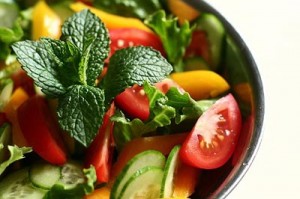
More evidence that low-calorie sweeteners are bad for your health
Studies show that artificial sweeteners can raise the risk of hypertension, metabolic syndrome, type 2 diabetes and heart disease, including stroke.

Natural Health News — Salad vegetables are chock-full of important vitamins and nutrients, but you won’t get much benefit without the right type and amount of salad dressing
In a human trial, US researchers at Purdue University, Indiana, fed people salads topped off with saturated, monounsaturated and polyunsaturated fat-based dressings and tested their blood for absorption of fat-soluble carotenoids – compounds such as lutein, lycopene, beta-carotene and zeaxanthin.
Those carotenoids are associated with reduced risk of several chronic and degenerative diseases such as cancer, cardiovascular disease and degenerating eye health.
The study, published early online in the journal Molecular Nutrition & Food Research, found that monounsaturated fat-rich dressings required the least amount of fat to get the most carotenoid absorption, while saturated fat and polyunsaturated fat dressings required higher amounts of fat to get the same benefit.
“If you want to utilise more from your fruits and vegetables, you have to pair them correctly with fat-based dressings,” said Mario Ferruzzi, the study’s lead author and a Purdue associate professor of food science. “If you have a salad with a fat-free dressing, there is a reduction in calories, but you lose some of the benefits of the vegetables.”
Olive and canola oils are best
In the test, 29 people were fed salads dressed with butter as a saturated fat, canola oil as a monounsaturated fat and corn oil as a polyunsaturated fat. Each salad was served with 3 g, 8 g or 20 g of fat from dressing.
The soybean oil rich in polyunsaturated fat was the most dependent on dose. The more fat on the salad, the more carotenoids the subjects absorbed. The saturated fat butter was also dose-dependent, but to a lesser extent.
Monounsaturated fat-rich dressings, such as canola and olive oil-based dressings, promoted the equivalent carotenoid absorption at 3 grams of fat as it did 20 grams, suggesting that this lipid source may be a good choice for those craving lower fat options but still wanting to optimize absorption of health-promoting carotenoids from fresh vegetables.
“Even at the lower fat level, you can absorb a significant amount of carotenoids with monounsaturated fat-rich canola oil,” Ferruzzi said. “Overall, pairing with fat matters. You can absorb significant amounts of carotenoids with saturated or polyunsaturated fats at low levels, but you would see more carotenoid absorption as you increase the amounts of those fats on a salad.”
Previous research
The findings echo those of a 2004 study in the American Journal of Clinical Nutrition that found that carotenoids were more bioavailable – that is, more easily absorbed by the intestines – when paired with full-fat dressing as opposed to low-fat or fat-free versions.
This study however is the first to compare the way different types of fats affect the bioavailability of fat-soluble nutrients like carotenoids.
The US Department of Agriculture funded the current research.

Please subscribe me to your newsletter mailing list. I have read the
privacy statement